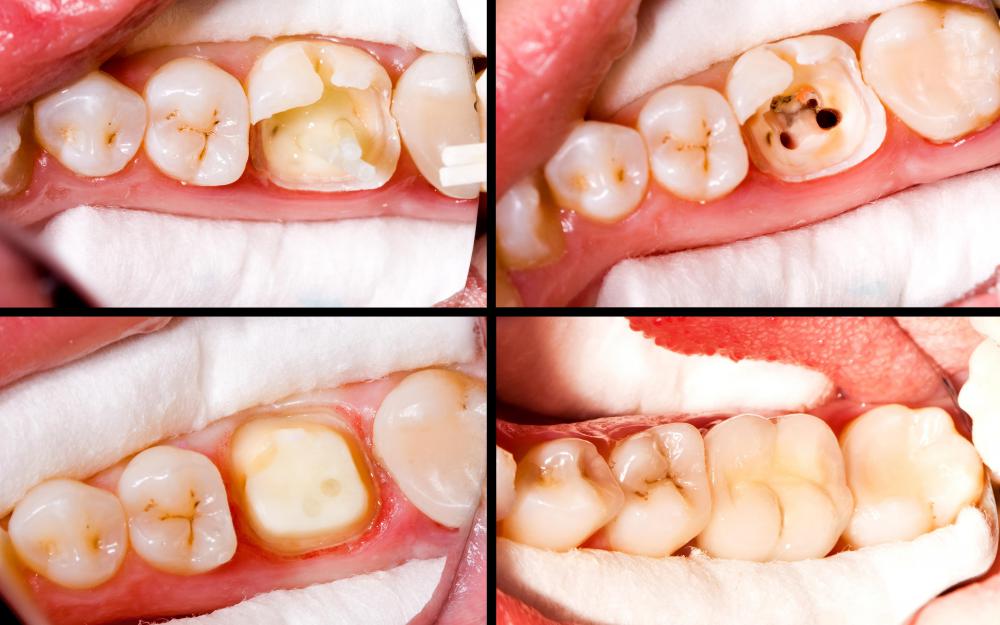At WiseGEEK, we're committed to delivering accurate, trustworthy information. Our expert-authored content is rigorously fact-checked and sourced from credible authorities. Discover how we uphold the highest standards in providing you with reliable knowledge.
What Is Involved in Pulpitis Treatment?
Pulpitis treatment options vary depending on the severity of the symptoms as well as the amount of damage which has occurred to the tooth. In the beginning stages, pain or discomfort is often treated with over-the-counter pain relievers such as aspirin or ibuprofen. As the amount of tooth decay increases, more invasive treatment methods, such as a filling or root canal, may be necessary. If the damage to the tooth becomes severe, the only successful pulpitis treatment method may be the removal of the affected tooth. Prevention is key and requires proper oral hygiene and regular visits to a dentist. Questions or concerns about the most appropriate pulpitis treatment in an individual situation should be discussed with a dental professional.
Pain and sensitivity to heat or cold is common in the early stages of tooth decay, and avoiding these extremes in temperature is often an effective pulpitis treatment option in these cases. Over-the-counter pain relievers may also be helpful, although these drugs tend to lose their effectiveness as the condition progresses. The pain associated with pulpitis may eventually become so severe that it becomes difficult to determine the exact tooth which is affected, and facial pain or headaches may develop.

When damage to the affected tooth begins to cause serious pain, pulpitis treatment by a dentist becomes necessary. As long as the tooth is not fractured, a filling may be all that is required. The tooth decay is removed with a dental drill, and the hole is filled with pain medication and composite materials. Antibiotics may be prescribed before or after the procedure in order to prevent or treat bacterial infections which could cause more severe dental or health complications.

A procedure commonly known as a root canal may be used to treat pulpitis if extensive damage to the tooth has occurred. The inner portion of the tooth, known as the pulp, and the root of the tooth are removed, and the resulting hole is filled and often sealed with a cap or crown. A root canal can often save the tooth and prevent the need for extraction for several years. In some situations, the amount of damage is too great, and the tooth must be removed. If the extracted tooth was in a visible area of the mouth, dental implants or devices known as bridges or partials can be used for cosmetic purposes.
AS FEATURED ON:
AS FEATURED ON:














Discuss this Article
Post your comments